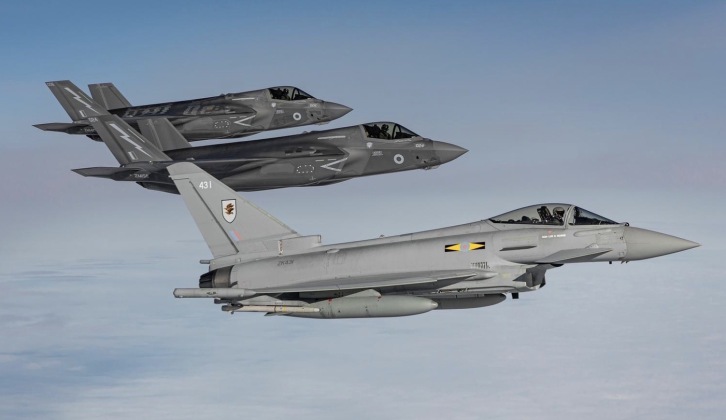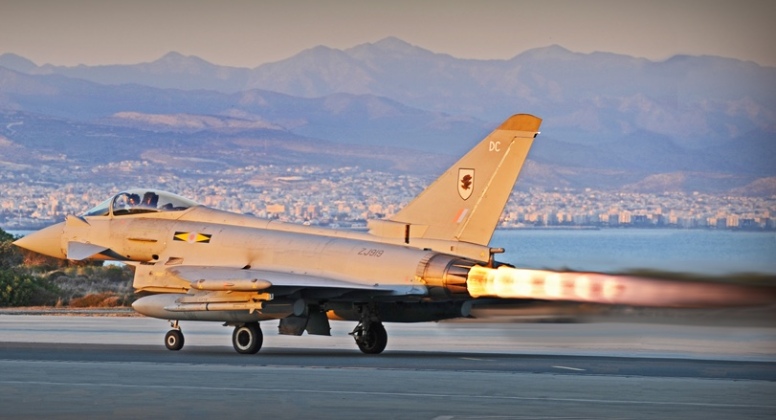British Prime Minister Rishi Sunak on April 23 confirmed that the Royal Air Force would forward deploy Eurofighter Typhoon fighter aircraft to Poland, stressing that London and Warsaw had strengthened security ties considerably amid joint support for the Ukrainian war effort. It remains uncertain how long the aircraft will remain in the country, but their arrival is expected to coincide with NATO’s ongoing Steadfast Defender exercises under which 16,000 British personnel will be present in Poland. Major cuts to planed British acquisitions of F-35B fifth generation fighters, production delays facing the fighter program in the United States, and seriously delays to bringing the fighter class up to a fully operational capability, has left the Royal Air Force heavily reliant on the older fourth generation Eurofighters.

Fifth generation fighters have been deployed to contribute to operations in Ukraine on both sides since the war’s initial weeks. These have ranged from U.S. Air Force F-35s collecting electronic intelligence on Russian air defence systems, to Russian Su-57 fighters suppressing Ukrainian air defences, launching precision strikes and even engaging in air to air combat. It remains uncertain whether the Eurofighters will integrate the new Captor-E active electronically scanned array (AESA) radars, or whether they will use obsolete mechanically scanned array radars, as the Eurofighter program was one of the very last in the world to transition away from the latter type meaning much of the fleet still relies on them. Deployment of the Captor-E could allow Eurofighters to provide electronic warfare and electronic reconnaissance support to Ukrainian and allied ground operations, with Britain having played a leading role in making personnel deployments to the theatre. These have ranged from Royal Marines deployed for combat against Russian forces since the war’s early stages, to Special Air Service special forces advisors reported to be supporting Ukrainian ground units as advisors.

The Eurofighter has been in production for close to 25 years, and was initially part of the same program as the better known and more widely exported French Rafale fighter, before France moved to develop its own aircraft separately. While the Rafale’s engines are the weakest of any fighter in the world in production today, giving the Eurofighter advantages in manoeuvrability and climb rate, the pan-European jet suffers from a much shorter range, higher operational costs, and much later adoption of electronically scanned array radars a full 18 years after the Rafale began to do so. The announcement of a new Eurofighter deployment comes just ten days after the class was deployed by the Royal Air Force to intercept Iranian drones in the Middle East, as part of a joint air defence operation with the United States, France, Israel and Jordan. British warplanes forward deployed to Permanent Joint Operating Base RAF Akrotiri have since October 2023 also provided significant support to the ongoing Israeli war effort against Palestinian militia groups through surveillance flights over the Gaza Strip, with Eurofighters reported to have played a central role in these efforts.
